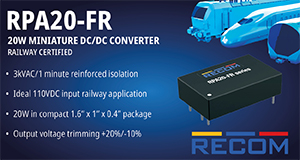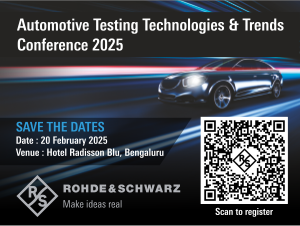New radar sensor with Bosch’s own computing chip (SoC) and flexible ADAS solution packages
- The Bosch ADAS product family is a flexible modular system for driver assistance. Bosch is to equip the first passenger cars in China from mid-2025.
- Bosch is the first Tier 1 supplier to present a new radar sensor with a complete in-house design and its own system-on-chip (SoC).
- The future portfolio for driver assistance and automated driving is rounded off by a next-generation multi-purpose camera and inertial sensor unit.
Bosch is presenting its extensive portfolio of solutions for assisted and automated driving and parking. It includes software features and hardware components that the technology group is aligning with the expectations of local drivers and can be easily customized for different customer needs. With its radar sensor, Bosch is the first Tier 1 supplier worldwide to break new ground and develop and manufacture the entire product in-house. The special feature: The sensor has a computing chip specially developed by Bosch–known as an SoC–which combines high computing power with the smallest possible footprint. The radar sensor fits into Bosch’s newly designed modular system for assisted and automated driving: The Bosch ADAS product family (Advanced Driver Assistance Systems) offers a kind of ecosystem of software, sensors and services as well as the appropriate high-performance computers. Customers can make use of this and flexibly utilize the comprehensive solutions for various markets and vehicle segment – from low-cost small cars to high-performance premium models. The goal: Bosch wants to enable manufacturers worldwide to bring driver assistance functions to the mass market more easily, quickly, and cost-effectively. A new generation of the multi-purpose camera and the inertial sensor unit for the precise localization of assisted and automated vehicles complement the sensor portfolio.
“With our new Bosch ADAS product family, we are offering cost-efficient solutions for assisted and automated driving to the usual high standards of quality and safety. We have the right software and hardware for driver assistance functions, from small cars to mid segment and premium vehicles. This enables car manufacturers to integrate functions quickly and easily into their vehicles and bring them to market very fast.”
Christoph Hartung, President of the Cross-Domain Computing Solutions division at Robert Bosch GmbH.
“With our new Bosch ADAS product family, we are offering cost-efficient solutions for assisted and automated driving to the usual high standards of quality and safety. We have the right software and hardware for driver assistance functions, from small cars to mid segment and premium vehicles. This enables car manufacturers to integrate functions quickly and easily into their vehicles and bring them to market very fast,” says Christoph Hartung, President of the Cross-Domain Computing Solutions division at Robert Bosch GmbH
New Bosch ADAS product family in three equipment variants
Advanced driver assistance systems help to increase safety and comfort on the road. For example, by providing the driver with targeted support during monotonous and tiring driving tasks. Bosch has many years of experience with driver assistance systems, their development and integration into the vehicle. A deep understanding of each vehicle area is required for optimum implementation. With this expertise, Bosch is repositioning the ADAS product family. It enables assisted driving and parking up to SAE level 2, thus meeting the prevailing demand on the market. Bosch offers the ADAS product family in three variants: for the entry segment, the mid segment and the high segment. The variants differ depending on the scope of the software, the number and combination of sensors, and the required computing power. Seamless harmonization of these individual components facilitates system integration. Bosch gives car manufacturers swift and uncomplicated access to driver assistance systems, enabling them to significantly accelerate the development time of their vehicles. Bosch brings its hardware and software components to the market both as a complete systemic solution and separately from each other, as is the case in modern vehicle development. This provides further scope, as individual components of the three variants can be exchanged and flexibly combined as required. Accordingly, manufacturers have further freedom to integrate the driver assistance systems into their cars on a brand-specific basis. Artificial intelligence can be found throughout the Bosch ADAS product family. Bosch uses it, for example, for perception and driving planning. Thanks to AI, the vehicle thinks ahead, pays attention to what other road users might be doing, and calculates the next steps to safely reach the destination.
The entry segment version already incorporates key safety and comfort functions into the vehicle. The car uses this to regulate its speed and distance from the vehicle in front depending on the situation and keeps in lane when lane markings are clearly visible. This variant can be implemented as a purely camera solution with the new multi-purpose camera from Bosch, but can also be supplemented with up to five radar sensors depending on the safety requirements (of a country). The variant for the mid segment unlocks even more extensive functions. For example, an extended lane keeping assist that can also cope with lane markings that are not visible in places. In this variant, Bosch combines its camera heads for perception with additional sensors. The computing power no longer takes place in the camera itself, but in a more powerful central vehicle computer, as is becoming standard in software cars. Thanks to Bosch, the vehicle masters more complex traffic scenarios, which further increases driving comfort and safety on freeways and in heavy traffic. The system also pays attention and supports the driver. Bosch is already introducing hands-free driving on the freeway in this variant, provided the legal framework in the respective country permits it. This means that the driver can take their hands off the steering wheel at times, but still remains responsible. The variant for the high segment represents the pinnacle of Bosch driving assistance. It uses a 360-degree video belt and impresses with even greater computing power, so that the vehicle can handle urban junctions with ease and safely enter and exit roundabouts. Hands-free driving is extended to urban traffic in this version, provided that the legal requirements in the markets allow it. Bosch takes into account the various regulatory requirements and safety assessments
Bosch ADAS product family goes into serial production in mid-2025
The equipment variant for the mid-range segment will go into serial production with a Chinese manufacturer in the middle of this year. Users of this system will benefit from an assistance system linked to the navigation system, which is particularly popular among Chinese customers. The vehicle then independently carries out driving maneuvers along the route entered, such as changing lanes on freeways. The driver remains responsible and must be ready to intervene at any time. This function makes driving in the heavy traffic of Chinese cities more convenient and safer. Bosch has also already secured its first orders for the high segment version, with serial production expected to start in summer 2025. Bosch has already acquired half a dozen new customers for the ADAS product family for mid- and high segment in China, including BAIC, Dongfeng and Jetour. Bosch is thus continuously strengthening its leading position in the global ADAS market.
New radar sensor with Bosch SoC
Radar sensors are key components of driver assistance systems and modern vehicles would be inconceivable without them. For the new generation of its radar sensor, Bosch has developed and manufactured all core elements in-house, including the computing chip (SoC). The new Bosch radar sensor uses “RF CMOS technology,” which enables the efficient integration of high-frequency and digital circuits on a single chip. The structure size of the transistors of only 22 nanometers makes the chip particularly powerful and efficient despite its small footprint. Bosch is the first Tier 1 supplier on the market to introduce this technology in serial production.
New generation of the multi purpose camera
With the increasing market penetration of more extensive driver assistance functions in the lower price segments, high-performance yet affordable camera solutions are steadily gaining in importance. The new multi purpose camera from Bosch enables assisted driving and parking functions (up to SAE level 2) from the entry segment. Serial production is scheduled to start in 2026, initially in the Chinese market. Bosch’s own optical image processing module in the new camera generation ensures optimum sharpness and precision over the entire product service life, even in highly fluctuating temperatures. The camera is particularly durable, with consistently stable functional performance.
With its 8 megapixel image sensor, a horizontal field of vision of 120 degrees, and a detection range of up to 300 meters, the camera enables safety and convenience functions for assisted driving. These include adaptive cruise control and distance control, emergency braking within your own lane, lane keeping in urban areas, and detection and stopping at red lights
The new multi purpose camera is the central interface for the fusion of various sensor data. This means that the camera combines the data from its own image sensor and additionally from up to five radars and other sensors such as driver monitoring cameras or interior sensors. This integrated approach enables OEMs to reliably comply with mandatory ADAS regulations (e.g. General Safety Regulation), improve driving safety, and support the driver on the freeway (e.g. with assisted lane changes).
Safe localization in all driving situations
For assisted and automated driving, it is essential that vehicles can locate themselves precisely and safely at all times. Even in difficult visibility conditions and in the absence of lane markings or if the signal from the global navigation satellite system (GNSS) fails – for example, when driving through a tunnel – it is essential that the vehicle’s location can be determined reliably. This is the only way to guarantee a high level of functional availability. At the largest automotive trade fair in China, Bosch is presenting for the first time the new generation of its high-performance inertial measurement unit (IMU), which has been specially designed for ADAS and vehicle dynamics applications. Vehicles pitch when braking, lean to one side (roll) or lurch (swerve) when taking corners. In addition to these movements, the inertial sensor unit measures the vertical, longitudinal and lateral acceleration of the vehicle. From this, it can precisely calculate the relative change in position of the vehicle, enabling it to maintain the originally planned route with only minimal deviation. With various product variants, Bosch offers a high degree of scalability, from the cost-effective entry segment variant for assisted driving to the high-performance sensor for automated driving up to SAE level 4. Bosch uses sensor modules that are manufactured in the company’s own production facilities and, in addition to an in-depth understanding of the system, can draw on a comprehensive range of experience from over three decades of developing such inertial sensors.








